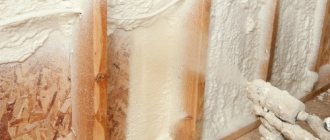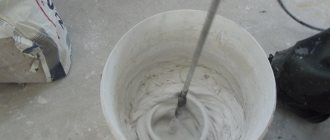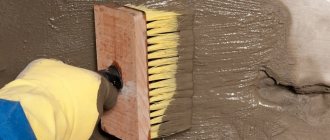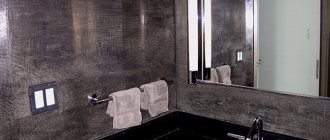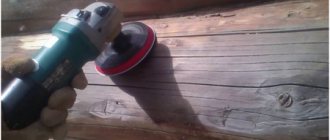Repair is a process that probably every person has encountered; in order to carry it out, you can invite specialists in this field, or you can deal with this issue yourself. When planning to do renovations on their own, people often wonder how to paint the floor with a roller? This question is relevant for those people whose floors in a house or apartment are made of wood.
Peculiarities
Any type of repair work has its own characteristics, and painting the floor is no exception. Most often, wooden flooring is chosen as flooring. Before you buy paint or varnish for the floor, you need to understand the origin of the existing floor covering. The material used for its manufacture is important when choosing paint or varnish, as well as the means with which the preparatory work will be carried out. You can paint the floor using acrylic, oil, wear-resistant and universal rubber paints.
It is necessary to take into account the characteristics of the room where painting work is planned. The intensity of use, exposure to external factors, average temperature and humidity are very important when selecting paint, since the service life of the painted surface will depend on its properties. If the surface itself has been previously painted, then it is necessary to determine the degree of compatibility of the used paint with the new product.
If the goal is not renewal, but the application of a new layer, then you need to either prime or treat the surface with a special compound before applying the decorative layer.
How to varnish wooden floors?
- Carefully apply a special primer to the prepared floor.
- Wait until the surface is completely dry.
- Apply varnish with a wide and soft brush.
Be careful when choosing a brush so that you don’t have to subsequently remove fallen hairs from the treated surface.
Sergey Dobronravov
Sergey Dobronravov is the author of the website remohouse.ru. Expert in the field of renovation, construction, infrastructure projects and building maintenance. More than 25 years of experience in construction.
What to paint with?
Today, there are various types of paints and varnishes that can be selected for both wooden flooring and concrete floors. There are two types of products that can be used to cover the floor: colorless and opaque. Clear varnishes are great for wooden surfaces. They are durable and fade resistant, and dry quickly. Decorative varnishes have many tones, thanks to which a wooden surface can be given a beautiful shade without blocking the structure of the wood. Beech, oak and other expensive flooring have a beautiful structural pattern, and a varnish with a translucent or transparent consistency will perfectly highlight it, give it shine and protect it from moisture.
It is worth remembering that the varnish is not resistant to various mechanical damage, and therefore it is better not to cover surfaces in rooms with high traffic. Otherwise, it is worth applying additional impregnations.
Do not use this product on flooring made of soft wood (spruce, pine). It is better to treat them with paint that maximally protects the surface from mechanical damage.
What is better to apply wood varnish - with a brush or a roller?
There are four main ways to varnish wooden floors: brush, roller, trowel and spray.
1. A spray bottle is a purely professional means of applying varnish to floors. With its help you can cover the floor with a large amount of varnish. The most appropriate use is to obtain a super glossy finish. To work with a spray gun, you need a lot of experience. The amount of varnish is huge, the cost of an error is sky-high, and as a result, the cost of work is high.
2. Varnishing with a spatula is also highly professional. Its use involves applying multiple layers with minimal varnish consumption for each. The application is specific, technologically stretches the process for a long time, is labor-intensive and also results in a higher price. An amateur who has never worked with the above tools will not be able to perform varnishing at the proper level.
Which paint is better?
Paints of various colors are divided depending on the chemical composition into acrylic, oil, wear-resistant and rubber:
- Non-toxic acrylic paints , which are water-based, perfectly paint over solid wood surfaces. They are quite durable (service life is approximately 10 years), and therefore are in high demand. The components present in the paint are not afraid of temperature changes and high humidity, which means that the paint itself is suitable for use in rooms without heating. There is no pungent odor when painting, and the surface with paint dries quickly.
- rubber paints which are environmentally friendly and safe for the human body , appeared relatively recently, but have already gained popularity. They are characterized by high strength, super elasticity, water resistance and low consumption. The polymers contained in the paint protect the wooden surface from fading and temperature changes.
- Oil paints are inexpensive and extremely common painting materials. They have a uniform consistency and are quite resistant to temperature fluctuations. Having high viscosity, they are ideal for painting OSB panels consisting of glued chip particles. Water-based paints are not suitable for such panels, as there is a high probability of swelling and bending of the slab. Over time, cracks may form on the painted surface. In addition, the paint takes a long time to dry and has a very unpleasant odor.
- Unlike oil-based types, wear-resistant paints are durable. Surfaces with such paint are not afraid of peeling or fading. It is easy to apply a layer, and the paint dries quite quickly. Their smell is quite specific; it disappears from the room only after a few days.
Read also: Sharpening tipped frame saws
Pros and cons of working with a roller
Using a roller to paint any walls has many advantages over classic brush painting:
- coverage of a larger area;
- saving time;
- the ability to replace the roller within a minute depending on the work performed;
- working with various types of surfaces;
- a more even result of applying paint without drips or streaks;
- economical paint consumption;
- the ability to work at heights by extending the handle.
However, there are some disadvantages to this tool:
- the cost of a roller is higher compared to a brush;
- difficulty in processing corners, joints and thin elements;
- the need to frequently replace the fur coat.
However, if you take into account all the features of working with the tool, you can save money and paint everything that needs to be painted.
Color solutions and decor
Gone are the days when only one color was used to paint a floor. Brown paint and several of its shades were produced specifically for wooden flooring. Today, manufacturers produce a wide color palette, thanks to which you can choose absolutely any shade. Water-based paints are especially distinguished by their color range. There are both ready-made options and those that can be given the desired shade using a special colorant. White paint is the base, to which a certain amount of the desired color is added. In order to get the desired shade of paint, you can add several colors.
Matte varnishes also have different colors and shades. With their help, you can give any wood flooring a touch of noble wood. Painting the floor covering can be done using one color or shade, evenly distributing the product over the entire surface. There are special stencil devices with which the surface of the old floor is transformed by applying a pattern. The technology is simple: a stencil with a cut out pattern is applied to the floor surface, and paint is applied to the open areas.
You can use either a sponge or a roller as a tool.
Work technology
Floor painting, like any other job, has its own technology. The final result depends on a competent and consistent approach to this type of activity. Before you begin the process, you need to prepare the tools that may be needed both during the preparatory work and for painting the floor:
- The main tool for covering the flooring is a roller. Today, manufacturers produce a wide variety of rollers of various sizes and materials: foam rubber, polyacrylic, fur, polyamide and even textured. Each type has its own purpose. For painting the floor, the best option is a fur roller marked VMP. They are produced in accordance with GOST and are the most durable compared to foam rubber options, and the layer of paint applied by them will lie evenly.
- To ensure uniform absorption of paint, it is better to purchase a special container with two-level planes. The product is poured into one half, and the other is used to squeeze out the roller.
Surface preparation
Preparatory work is carried out based on the condition of the coating surface. If the flooring is new, then you need to sand the surface well using a sanding machine, then remove dust and debris. If the coating is old, then first remove the paint layer using either a mechanical (using a hair dryer) or chemical (solvent) cleaning method. The resulting cracks are puttied, and after drying the surface is leveled.
If the coating is to be varnished, then there is no need for a primer. Such floorings are treated with special impregnations that protect the wood from mold, fungi and accidental fire. To prepare the floor for painting, use drying oil or a special primer, which gives the flooring antiseptic properties and prepares the surface.
A smooth and level floor with good adhesive properties will greatly facilitate the adhesion of paint to the flooring.
How to paint?
After preparation, you can start painting the floor in the apartment. There is a certain sequence for this stage of work. Before painting, the composition must be thoroughly mixed in a jar to remove clots, and this procedure is carried out regardless of the color (black, white, colored) of the paint. Then you can begin painting the surface adjacent to the walls, starting on the opposite side of the entrance. It is more convenient to do this with a small brush, since it will not be possible to thoroughly paint every corner with a roller.
After applying a layer around the perimeter, you can begin painting the central part of the floor. The applied layer of paint must dry completely, and only then can you begin installing the skirting boards. In order not to stain wallpaper or other facing materials on the walls, you need to cover the part adjacent to the baseboards with masking tape or other available means. Next, you can start painting the baseboards using a narrow brush. After the first layer has dried, a second layer is applied to the baseboards. After waiting the required time for it to dry on the baseboards, you can begin applying paint to the central part of the surface.
When the painted surface is completely dry, you need to prepare the floor for use by washing it thoroughly.
Staining wooden floors
To prevent bubbles and cracks, apply paint in thin layers. This way it will be spent more economically. Wash painted floors with warm or cold water. There is no need to add soap or soda to the water, as the paint may lose its shine and strength.
Please note that the floorboards must be strong and not sag, otherwise cracks will appear in the seams between the boards and the putty will begin to crumble.
Simple floor painting
The prepared new wooden floor is coated with paint in one, or better yet, two layers.
- Apply paint evenly along the boards and distribute it thoroughly on the surface.
- The second layer is applied to the well-dried first one.
- After drying, wash the floor with warm water.
During the first week, it is recommended to wipe the floor with hot water to remove traces of drying oil. Soon the coloring will become more durable and all dirt will be easily removed. The floor does not need to be washed, but simply wiped with a damp cloth.
Improved floor coloring
Wooden floor
- Apply drying oil or primer to the floor.
- Wait until the surface is dry.
- Apply oil or varnish putty to problem areas.
- Clean the dry surface with sandpaper.
- If there are places where the putty has shrunk, reapply the putty to them.
- Carefully sand off the final layer of putty.
It is recommended to make the putty colored - to match the color of the paint. This is easy to do - add 100-150 g of dry or grated paint per 1 liter.
High quality floor painting
There are two options for high-quality staining:
First:
- Cover the floor with drying oil and dry.
- Apply putty to the surface two to three times.
- Thoroughly clean the first layer of putty.
- Apply a second layer of putty, level, and dry.
- Clean the putty again and prime the surface. Wooden floor
- After this, apply paint in two or three layers.
Second:
- Clean off the first layer of putty.
- Apply a thinner putty as a second layer.
- Place gauze tightly over the surface.
- Press the gauze into the putty using a putty knife.
- Wait until the surface dries.
- Clean the surface and apply a third layer of putty.
- Dry the surface again and clean thoroughly.
- Prime and paint in three layers.
After two weeks or even a month, it is recommended to cover the painted surface with a special floor varnish in one or two layers (do not confuse it with parquet varnish!).
Advice from professionals
There are several professional tips that can help you achieve the best results:
- The application of any decorative coating requires a clean surface, so the base must not only be cleaned, but also dried after washing. Preliminary surface treatment is required for floors made of any material (concrete, tile, wood, plywood).
- When preparing the surface of a concrete floor, quartz sand should be added to the primer. It will make the floor less slippery. In addition, to increase the strength of the cement surface and get rid of dust, you can use a special impregnation topping.
- When preparing wooden flooring for varnishing, it is better to treat the surface with oil or a wax mixture. This treatment will help protect the surface under intense loads.
- For plywood floors, it is better to pre-treat with an acrylic primer, which protects this material well from moisture and mold.
- The readiness of the surface after primer treatment can be checked by placing your palm on the floor. If the composition does not stick to your hand, then you can start painting.
You will learn more about how to properly paint a floor in the following video.
It seems that there is nothing complicated in choosing a paint roller, but in fact it is an important element for painting that requires special attention. The roller determines how the paint will adhere to surfaces, how convenient it will be to paint, whether it is suitable for reuse, and so on. Not only the dimensions of the handle and the roller itself are important, but also the materials that were used for it.
Therefore, for its readers, “Dream House” has prepared a full review that will help you choose a high-quality paint roller and easily cope with painting any surface and any type of paint.
Read also: DIY drill sharpening machine video
How to choose a paint roller
Mistakes when painting with varnish yourself
Often, when painting the floor on their own, home craftsmen are faced with various problems:
- Poor drying of varnish. This usually happens when the varnish is incorrectly selected or the recommended temperature conditions are not observed during work. If a two-component composition is used, then slow drying indicates an insufficient amount of hardener.
- The appearance of whitish stains on the varnished floor. This indicates that moisture has entered the coating due to high humidity in the room.
- Formation of air bubbles on the surface and swelling of the coating. Such problems arise due to violations of varnish application technology.
- Uneven and uneven coverage. This is a typical mistake that inexperienced craftsmen make. Some types of varnishes dry out very quickly, which does not allow a person who does not have the skills to apply the composition evenly.
Only professionals can make a beautiful and smooth floor covering. Don't skimp on quality! Order this work, which has been finishing and painting wooden houses for over ten years.
We employ qualified craftsmen who have undergone special training, have extensive experience and the necessary work skills.
You can contact us using the coordinates on the “Contacts” page.
Calculate the cost of painting and insulating your home right now
Select types of work:
Select materials:
What types of rollers are there for painting surfaces?
Paint rollers types and sizes
You can use different rollers at home. First of all, they can be used for walls, floors and ceilings. The following paint rollers are classified according to their purpose and type:
- foam;
- polyacrylic (velor);
- fur;
- polyamide made of twisted yarns;
- textured;
- wallpaper rollers;
- frame;
- façade
To understand all their differences, you should familiarize yourself with each type separately.
Foam rollers
These inexpensive synthetic polyurethane rollers do not last long and are not suitable for active formulations. In particular, they are used for priming and painting surfaces with water-dispersion paints. But they are easy to use and affordable. They can be washed and dried quickly. Fur coats can be easily changed, so this option is quite practical and helps save money. Thanks to the foam rollers, the paint is applied evenly and accurately. You can easily paint on the sides and in hard-to-reach places if the roller size allows.
Polyacrylic (velor) rollers
This type is ideal for paints and varnishes, water-based and oil-based paints. Despite the light fleecy texture, no fluff from the roller remains on the surface. The paint is applied neatly and evenly thanks to the velor roller. It can be used on ceilings, walls and other smooth surfaces.
Fur rollers
They are made from natural sheepskin or polyester-based faux fur. The roller has a hard fleecy surface, so it is perfect for enamels and oil paints. The length of the pile should be selected depending on the type of surface. If the wall is not smooth, but rather porous or rough, then you should pay attention to a roller with long pile. They can be used to paint walls, floors and other surfaces.
Fur roller for painting
Polyamide rollers
There are different types of nap rollers, and polyamide is one of this category. They have the longest pile, so they are suitable for painting rough surfaces such as putty, drywall and the like. They are relevant for water-based enamel paints.
Textured rollers
If you are not satisfied with just a smooth surface, but do not want to use wallpaper, then you should pay attention to embossed rollers for decorative plaster, wet putty, and the like. They have a design similar to all conventional rollers, but they do not have a soft coat, but only a rubber base with some kind of pattern. There are many different options that you can choose according to your taste and preferences.
Textured rollers for decorative plaster
Roller with a pattern for walls
Wallpaper rollers
This type of roller is used for wallpapering. During wallpapering, air may be trapped under the canvas; eventually, it must be removed from there. A special roller with a fairly hard surface works wonderfully for this. With it, smoothing the wallpaper will not take much time. After use, it can be easily washed and dried quickly.
Frame rollers
These rollers are called frame rollers because they are made differently from all the others. They don’t just wear a ready-made fur coat. There is a completely finished frame on which the soft covering is attached. When using them with a roller, less paint is absorbed. Their cost is low, but they are easy to use.
Facade rollers
They are distinguished by long pile and the presence of a special intermediate padding, which slows down the rotation speed of the roller. This contributes to better quality painting and the absence of splashes during painting.
Brushes
This tool is a wooden, plastic or polymer base that holds natural or artificial fibers in the form of a brush. Brushes are used to work with almost any type of paint, including alkyd, oil, acrylic, latex.
It is important to know what type of paint will be used in order to choose the right paint brush. For example, brushes with artificial fibers are used for more aggressive compounds such as latex or acrylic.
The fact is that to maintain the paint's liquid, powerful solvents are added to it, which can lead to the breakdown of organic fibers. This will lead to the fact that when painting, the quality of the coating will sharply deteriorate due to the appearance of bristle fragments.
Tips for choosing brushes
- In order for painting work to take place at a normal rate, so that the layer falls on the surface softly and evenly, it is better to choose a painting brush with split ends. The fibers should be elastic, not break when pressed, thick at the base and soft and thin at the ends.
- It is better to carry out painting work with brushes that have a bristle length at least one and a half times longer than the width. This rule applies to brushes that you are going to use to paint the floor, walls or ceiling.
- Contrary to the misconceptions of many, brushes just bought in a store are not ready for use. They require mandatory treatment with a soap solution to remove dust, debris, grease and broken bristles. Before you paint the floor or ceiling, be sure to dry your brush.
- It is better to carry out painting work by dipping the brush to ½ the length of its bristles. This will ensure normal flow and prevent paint from running down the handle.
- If you are painting a wooden floor or boards, you should work along the grain. Some brush bristles will be lost depending on the quality of the coating. Treat unplaned boards with cheap brushes.
Brushes can be used to work with almost any type of paint
What to look for when choosing a paint roller
Which roller for which paint?
When you come to the store, it is difficult to analyze the quality of the roller solely by its appearance. Not all sellers have personal experience in using paint rollers, so they can only advise on manufacturers, price and similar characteristics. The paint roller should be chosen correctly so that it is convenient to use, and the resulting result fully satisfies expectations.
Here are some tips to help you choose the perfect paint roller:
- When painting the ceiling, you should choose a tool that is not heavy, so that your hands do not get tired in the first couple of minutes. Ideally, rollers with a long handle are suitable for the ceiling so that you can paint while standing on the floor, but they weigh a lot and are more suitable for professional painters.
- For walls, the weight of the tool is also significant. Take, for example, a fur roller. After impregnation with paint, it becomes even heavier, and it is very difficult to use it for a long time without good physical preparation.
- The colors of the fur coat can also be different. It is much more convenient to work with a white fur coat or any other. Rollers with dark piles have the ability to fade over time, and the long pile of low-quality rollers can remain on the wall along with the paint.
- Make sure that there are no seams on the fur coat, because this will cause discomfort during painting. Such rollers leave marks on the surface. Of course, they can be removed, but to do this you will have to apply another layer of paint, and maybe more than one.
- Don’t be shy to try each handle for strength. You can press on the roller to see how hard it is and whether it bends during use. Also, the handle itself should be comfortable; for this you need to hold it in your hand.
The most important thing when using a paint roller is that the painting process is uncomplicated, and the surface turns out well painted even after the first coat. At the same time, I want the cost of the tool to be low. A huge selection of options in construction stores fully fulfills all the requirements of customers, so feel free to go looking for your roller, armed with our advice.
Difficulty of choice
Naturally, when choosing a brush or roller for painting work, you should choose only high-quality and professional tools. In order to whitewash the ceiling in a utility room, of course, you can save money and buy a cheaper tool.
However, if you are going to paint or whitewash a living room, office or a high-traffic area, it is better to opt for a high-quality roller or brush. There are several reasons for this:
- When painting, a low-quality brush is almost guaranteed to leave lint on the walls. The same applies to rollers. In some cases, especially when using thick glazes, enamels or water-based paints, a problem with the quality of the coating is noticed too late to be able to change it. As the paint dries, it loses volume and air bubbles, protruding fibers or hairs begin to appear on the surface. It is better to immediately opt for a reliable brush or roller, so as not to encounter unexpected additional costs.
- Painting or whitening surfaces with professional tools is much more pleasant, faster and more convenient than using cheap analogues. Expensive brushes and rollers allow you to paint in a thick, even layer. This has an effect not only on the appearance of the ceiling or walls, but also on the life of the coating and its resistance to external factors.
- When painting, each task has its own specially designed roller or brush. Proper use of the tool will save you from large losses of paint that may fall on the floor, improve the quality of the finish, reduce material consumption, and help you complete complex painting work even without preparation.
Both tools can be used for painting work



